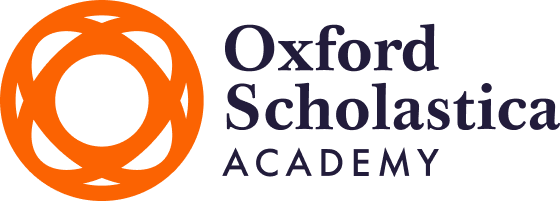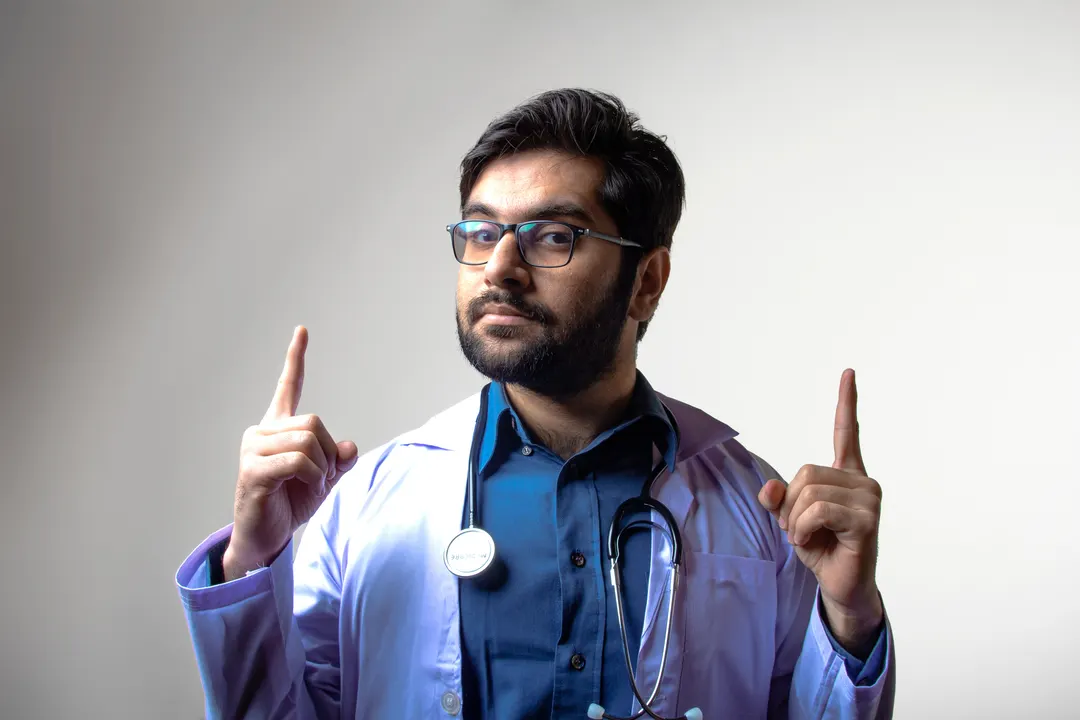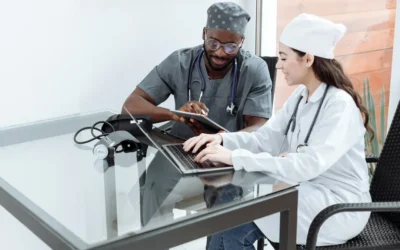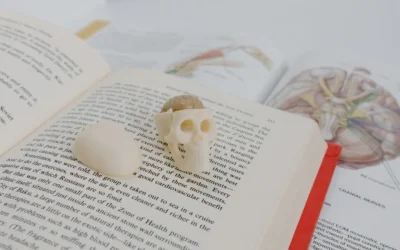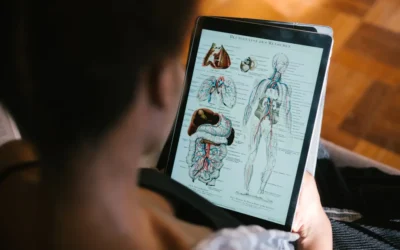Doctors, nurses and surgeons have the vital task of communicating with patients and families, informing them about diagnoses and treatment options, and answering any questions that may arise.
For this reason, medical professionals need to pay extra attention when using medical terminology, making sure that patients and their families understand what’s being said. This is essential in ensuring patient safety, gaining informed and valid consent, and avoiding unnecessary stress and anxiety.
Having said that, a sound understanding of medical terminology is still fundamental for a range of healthcare professions. Medical lingo greatly improves communication between practitioners, standardises practice, and ultimately ensures greater quality of care.
Curated by a junior doctor, here’s our top selection of medical terms to learn for aspiring Medicine students. We challenge you to boost your medical lingo this year, ahead of your university applications.
Anatomy and Physiology
Kicking us off is the structure and function of the human body, from anatomical parts to physiological processes!
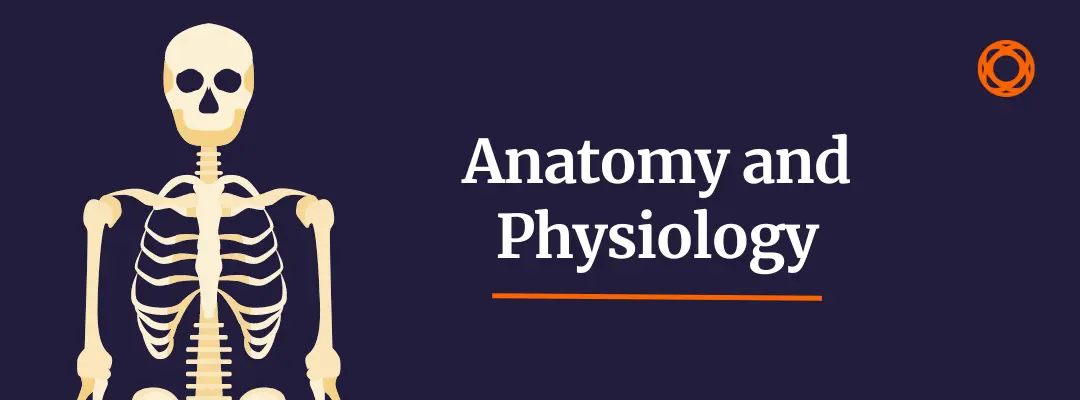
Alveoli
The alveoli are the deepest structure of the lungs, where the gaseous exchange happens. Here, oxygen is exchanged for carbon dioxide.
The alveoli can be thought of as a bunch of grapes, with each grape being an alveolus. They are easily damaged by chemicals like those in cigarette smoke.
Aorta
The aorta is one of the most important structures in the body. It’s the main artery that stems from the left ventricle and branches off into other major arteries, including the carotid, subclavian and coronaries.
The aorta is large, measuring approximately 30cm, with a diameter of 3cm. It needs to be very strong as it receives highly pressurised blood from the heart.
Brachial artery
In Latin, “brachium” means “arm”, and the brachial artery is the main vessel of the upper limb. It can be palpated in the antecubital fossa (the depression anterior to the elbow), and it splits into the radial and the ulnar arteries.
The brachial pulse is one of the most important peripheral pulses to feel for, along with the radial pulse at the wrist and the foot pulses.
Cerebellum
Cerebellum means “little brain”, and is essentially a miniature version of the brain (also known as the cerebrum). It has two lobes, a cortex, and a deep matter.
The cerebellum is extremely important. It regulates motor control and coordination, but also cognition, behaviour and emotions. You can think of the brain as the initiator of movement and emotion, and the cerebellum as the fine-tuner of these.
Cerebral cortex
The cerebral cortex is the outer layer of the brain. It’s divided into columns and microcolumns, each with a different function.
Different areas of the cortex are concerned with different areas of higher functions like cognition, movement, language and emotion. The science behind the functioning of the cerebral cortex is still imprecise.
Choroid
The choroid (meaning “vascular layer”) is the capillary bed that coats the eye and provides blood supply to the eyeball, lying between the retina and the sclera.
Clavicle
The clavicle is the collarbone that connects the shoulder to the breastbone. It has the fundamental function of keeping the shoulder girdle in place.
You can feel your clavicle at the base of your neck, if you run your hand to the side.
Coronary artery
The word “coronary” comes from the Greek meaning “crown”. The coronaries are the arteries that supply the heart muscle with oxygenated blood.
They stem out of the aorta and wrap around the heart like a crown. You do need some imagination, but if you close your eyes, you can just about picture it!
Diaphragm
The diaphragm is one of the main regulators of respiration. Its contraction creates a vacuum inside the chest, leading to lung expansion, and its relaxation helps push the air out of the lungs.
The diaphragm sits between the chest and the abdomen, and is innervated by the phrenic nerve.
Dura mater
The dura is the thickest and strongest of the layers that enclose the brain. It’s found just underneath the bone itself. Under the dura is the arachnoid mater, and under that, is the pia mater.
These three layers collectively compose the brain meninges: tough membranes that protect the cerebrum and spinal cord.
Endocardium
“Endocardium” is a composite word: “endo” means “inside” and “cardium” means “heart”. The endocardium is the innermost layer of tissue that lines the chambers and valves of the heart.
It has many important functions: transmitting the wiring that keeps the heart beating, ensuring the laminar flow of the blood (as opposed to turbulent flow which can cause clots to form), and separating the blood from the heart muscle.
Endocarditis is an extremely serious problem that can be due to infection, or other causes, such as autoimmune conditions.
Epidermis
The epidermis is the outermost layer of the skin. As “epi” means “outside” and “dermis” means “skin”, when combined, this word means “outside skin”.
The skin is a very complex organ composed of many layers, including the epidermis, the dermis, and subcutaneous tissue. The epidermis is further divided into sub-layers, namely stratum basale, spinosum, granulosum, lucidum and corneum.
“Stratum” means “layer”, and each of these strata have different functions like sensation, secretion and protection.
Eustachian tube
You might not know exactly what the Eustachian tube is, but I promise you’ve certainly felt it before! The Eustachian tube connects the ear to the nasal cavity, and it’s involved in keeping the pressure balanced between the inside of the ear and the outside world.
You know that unpleasant sensation of fullness in your ear when you’re on a plane? That’s the Eustachian tube trying to work out the right pressure to maintain.
Femur
The femur is the strongest and longest bone in the body, stretching from the hip to the knee. It has the fundamental function of supporting the trunk on the legs.
The head of the femur forms a ball-and-socket joint with the hip, which often fractures in elderly people or people affected by osteoporosis. This requires surgical intervention to replace the head of the femur with an artificial ball-and-socket.
Sometimes, hip surgery can be performed before the joint fractures, if the joint space is reduced and painful.
Inferior vena cava
Venous capillaries increase in size as they get closer to the heart, where they can then be called veins. Veins spill their blood inside the atria, which means “entry hall” in Latin.
Capillaries that come from the lower half of the body ultimately pool into the inferior vena cava, a large vein that drains deoxygenated blood from the lower extremities into the right atrium.
Mastoid process
The mastoid process is a bony protuberance found behind the ear lobe.
It serves as a point of attachment for the sternocleidomastoid muscle, and contains many air cells that drain the middle ear – it can also get painfully infected at times!
Myelin sheath
The myelin sheath is a thin layer of fat that insulates neurons. You can think of myelin as the plastic coating that wraps electric cables.
It has the fundamental function of preventing the dispersion of electricity within the neurons, therefore speeding up transmission.
Nephron
The nephron is the function unit of the kidney – where all the action happens! It’s a little tangled ball of capillaries that filters the blood, pushing toxic substances into the urine.
The nephron is connected to a long and wavy tubule that takes the urine away from the blood into the ureter, and ultimately to the bladder.
Occipital bone
The occipital bone is the cranial bone that you can feel at the back of your head, just above your neck.
It has the fundamental function of protecting the cerebellum, the occipital lobe of the brain, and the brain stem. It’s a thick bone, and understandably so, given its importance in protecting three of the most important components of the nervous system.
Pancreatic duct
The pancreatic duct runs from one end of the pancreas to the other, towards the small intestine (the duodenum in particular).
On its way, it collects the pancreatic juices which will ultimately be released into the intestines. Pancreatic enzymes are important in the digestion process.
Parietal lobe
The parietal lobe is one of six lobes that compose the cerebrum (along with the temporal, frontal, occipital, limbic and insular lobes).
The cerebrum is divided into two hemispheres that symmetrically contain lobes. The parietal lobe is predominantly involved with processing sensory information and language.
Proprioception (the sensation of position in space) and mechanoreception (the sensation of mechanical pressure) are both processed in the parietal lobe.
Patella
The patella is a sesamoid bone, which means it isn’t attached to any other bones. Instead, it’s suspended by tendons and does not articulate (touch surface) with any other bone.
The patella is also known as the kneecap, attached to the quadriceps tendon above and the patellar tendon below. Its main function is the protection of the knee joint.
Pericardium
The pericardium is a fibrous layer of tissue, a sac that encloses the heart, keeping it stable and preventing over-expansion.
Inflammation of the pericardium (pericarditis) is a serious condition, usually resulting from infection or autoimmune conditions, leading to sharp chest pain that fluctuates with breathing.
Quadriceps
The quadriceps are a group of four individual muscles (hence the name “four heads”). The individual muscles are the vastus medialis, vastus lateralis, vastus intermedius, and rectus femoris.
This very powerful muscle group is responsible for stabilising and extending the knee joint.
Spleen
Medical tradition associates the word “spleen” with affliction, malaise and melancholy. Yet, there’s nothing dramatic about the spleen; it’s just a fist-sized lymph node, sitting in the left upper abdomen, filtering blood.
A damaged (or surgically removed) spleen can, however, be quite upsetting for the body, as the spleen, being lymphatic tissue, plays a central role in immunological response. Damage to the spleen can result in catastrophic intra-abdominal haemorrhage, and removal leads to an increased susceptibility to infection.
Sternocleidomastoid
The word “sternocleidomastoid” is certainly a mouthful, but it can be broken down into three smaller words to give us the attachment points of this muscle: the sternum (breastbone), cleido (which stands for clavicle or collar bone), and mastoid (which is the bony protuberance behind your ears).
This muscle is responsible for tilting the head side-to-side and flexing the neck.
Submandibular gland
The submandibular glands are the two areas underneath your jaw that tickle when you’re hungry and catch sight of food. They’re responsible for producing saliva.
They can also swell up and be quite painful! This can happen for all sorts of reasons, ranging from mumps to rarer conditions, infections and cysts.
Supraspinatus
The supraspinatus is a muscle that stabilises the shoulder joint, and is a part of the rotator cuff muscle group.
The name of this muscle precisely identifies its location. “Supra” means “above” in Latin, and this muscle is located above the spine of the scapula, which is the bony protuberance you can feel in your upper back.
Thyroid gland
The thyroid is a small gland attached to the front of the windpipe, shaped like a butterfly, and composed of two main lobes connected by a thin stretch of tissue.
The thyroid gland produces thyroid hormones, which are important positive regulators of metabolism.
Ulna
“Olena” means “elbow”, so it’s no surprise the ulna is the bone that stretches from the elbow (making up the elbow protuberance) to the wrist. The ulna runs parallel to the radius, the other bone of the forearm. In general, the ulna provides stability to the wrist, whereas the radius acts as the pivot point.
Ulnar fractures are sometimes referred to as “nightstick fractures”. The name comes from the idea that a suspect struck by a police baton would use their forearm to protect their head, and injure their ulna in the process.
Zygomatic bone
The zygomatic bone might be a big phrase, but it’s actually just your cheekbone. This bone is one of the 14 facial bones that assemble to make up your face.
Fun fact about the zygomatic bone: it cannot move!
Diseases and Conditions
Next, we’re concentrating on medical conditions and diseases of the human body.
Ready? Let’s go.
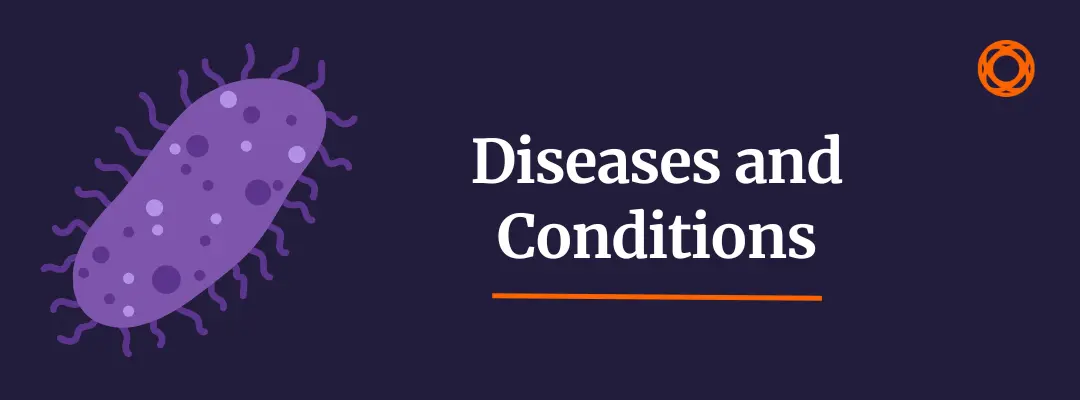
Alzheimer’s
Alzheimer’s is an unfortunately increasingly common condition, caused by the deposition of protein aggregates within the brain matter, leading to brain shrinkage and neuronal death.
The resulting dementia leads to a steady decline in memory, behaviour and social skills, often interfering with daily tasks.
Anaemia
If we consider the word “anaemia”, we know that haem stands for “blood”, and the prefix a- in Greek usually means “without”.
Anaemia is a condition where the body doesn’t have enough red blood cells to meet the body’s need for oxygenation. Anaemia can be due to different causes, but vitamin deficiency and iron deficiency are the most common.
Tiredness, shortness of breath and chest pain are the most common symptoms as the lack of red blood cells result in reduced oxygenation.
Appendicitis
When a word contains the suffix -itis, it refers to an inflammatory process. Unsurprisingly, then, appendicitis is the inflammation of the appendix, a dead-end appendage that hangs off the intestine in the right iliac fossa.
Appendicitis is usually treated as a surgical emergency, as the appendix can burst and infect the abdominal cavity. In female patients, pregnancy or ovarian problems should always be ruled out.
Arthritis
Arthritis is the inflammation of the body’s joints. It’s a very broad term that encompasses many different types of joint inflammation, including:
- Rheumatoid arthritis (autoimmune)
- Septic arthritis (infective)
- Gouty arthritis (due to deposition of uric acid crystals)
- Spondyloarthritis
- Osteoarthritis
- Other rarer conditions
Treatment differs according to the underlying cause.
Asthma
Asthma is very common. In fact, it’s the most common chronic condition in children.
It results from constriction of the airways (bronchoconstriction) when the lungs are exposed to triggers such as smoke, allergies or cold air. The narrowing and mucus plugging of the airways then leads to wheezing, breathlessness and coughing.
Treatment for asthma involves inhalers, either preventers or relievers.
Bronchitis
Bronchitis is an inflammation of the bronchi, or the main airways. In acute settings, bronchitis resolves without treatment. However, chronic bronchitis results in further damage and scarring due to the long-standing inflammation, mucus build-up and potential infections.
Chronic bronchitis is a type of chronic obstructive pulmonary disease (COPD) and usually results after a lifelong smoking habit or exposure to irritants and chemicals.
Cataracts
Cataracts develop when the lens of the eye becomes patchy and cloudy. If you wear glasses and touch the lenses with your hands, a layer of cloudy grease will make it difficult to see clearly – that’s what happens with cataracts. Ageing makes lenses stiffer and cloudier.
Surgery is the mainstay of treatment, and it involves replacing the affected lens.
Cirrhosis
Cirrhosis is the chronic inflammation of the liver, and a very severe condition.
Cirrhosis can develop after a viral infection of the liver (hepatitis), long-standing alcohol abuse, or other rarer causes. Liver tissue becomes scarred and stiff, leading to the backflow of blood into the venous circulation, the failure of enzymatic production, and the leaking of fluid into the abdomen, which can result in infection.
Treatment is quite tricky and will ultimately involve a liver transplant if the triggering cause isn’t removed or addressed.
Dementia
Dementia is a broad term encompassing a wide array of symptoms, such as memory loss, cognitive difficulties and impaired social abilities.
Dementia can be caused by many underlying conditions, such as Alzheimer’s, Parkinson’s, Huntington’s, and vascular dementia. Ultimately, the common theme across all of these is damage to the central nervous system.
Diabetes
Diabetes Mellitus is another highly prevalent condition among the Western population. This condition causes blood sugar to be elevated, leading to microvascular and macrovascular damage, and retinal and kidney damage, among other issues.
There are two types of diabetes mellitus: insulin-dependent and non-insulin-dependent. The two types differ on the underlying cause for hyperglycaemia, as well as treatment, onset and disease progression.
Eczema
Eczema is different from psoriasis. Eczema is a common condition that leads to dry, red and itchy skin.
The cause of eczema is unknown, but it seems to be an allergic reaction, developing alongside other atopic conditions like hayfever and asthma.
Endometriosis
Endometriosis happens when the tissue that lines the uterus grows outside the uterus. For example, the ovaries and fallopian tubes may get “invaded” by uterine tissue, leading to severe pelvic pain and making it very difficult for an affected patient to get pregnant.
Pain relief and hormonal treatment to shrink uterine tissue are usually offered to patients, as well as surgery in more severe cases.
Epilepsy
Epilepsy can be thought of as a thunderstorm happening in a person’s brain. The abnormal electrical activity and neuronal firing within the brain can lead to seizures, fits, unusual behaviours and loss of consciousness.
Epilepsy can have an insidious onset at any age. It’s usually a lifelong condition that will affect daily tasks like driving, operating machinery and sports.
Antiepileptic medications need to be carefully advised to women of childbearing age, as they can be very harmful to a foetus.
Glaucoma
Glaucoma is a serious condition where the optic nerve is damaged by a build-up of pressure inside the eyeball. This pressure is usually caused by the build-up of fluid or the impaired drainage of fluid.
Changes in vision, vomiting, headaches and red eyes are usually the most common symptoms and signs of closed-angle glaucoma, which is a medical emergency.
Gout
Gout is a type of inflammatory arthritis. It involves the deposition of uric acid crystals within the joint space, causing inflammation and sudden, severe pain.
Treatment relies on the removal of excess uric acid from the bloodstream with a drug called allopurinol.
Haemophilia
The term Haemophilia can be understood as “a friend of blood”. They could have named this something else, I give you that.
Patients with haemophilia bleed easily because they lack a certain clotting factor (depending on which haemophilia type). This causes many problems including hemarthrosis (bleeding in joint spaces) and major haemorrhages.
Haemophilia is an X-linked genetic condition, meaning that males are usually affected.
Hypertension
Hypertension is the medical term for high blood pressure, composed of the words “hyper” and “tension” (meaning pressure). High blood pressure is highly prevalent in Western populations, and it’s a common cause of more serious conditions such as heart infarcts and strokes.
Luckily, a huge variety of medicines have been developed over the years to address raised blood pressure.
Influenza
Influenza, also known as the flu, is one of the most common upper respiratory tract infections, especially during the winter months.
Influenza is an early Italian word that refers to the ease with which this condition spreads. Although caused by a virus, it can often result in an increased susceptibility to bacterial infections that are more deeply seated in the lungs (such as pneumonia), especially in the elderly population.
Leukaemia
Leukaemia is a broad term for blood cell cancers. Leukaemia begins in the bone marrow, where an abnormally high amount of immature blood cells are produced, displacing the functional cells.
Usually, it begins early in life or in elderly patients, and symptoms include bruising, fatigue, bone pain and unexplained fevers. The classification of leukaemia is complex, and treatment is very diverse.
Malaria
Malaria is an interesting condition, caused by a parasite transmitted by mosquito bites. Malaria was originally associated with swamps, unsurprisingly, given the number of mosquitoes one can find in a swamp.
Mosquitoes’ merozoites (think of them as spores that can develop into new flies) spread and infect red blood cells, leading to severe symptoms that require emergency treatment. Treatment is available but needs to be initiated promptly.
Multiple Sclerosis
Multiple Sclerosis is a demyelinating disorder that affects the central nervous system, that is the brain and spinal cords.
Neurons are wrapped by a fatty substance known as myelin, which acts as an insulator. Myelin speeds up the electrical signal and prevents dispersion. When neurons become demyelinated, the transmission of neuronal signals is impaired.
With MS, all senses and neuronal functions can be impaired, including vision, balance, movement and sensation. It’s a very serious and debilitating disease.
Osteoporosis
Osteoporosis is a condition that weakens the bones, causing bone breakdown to occur at a higher rate than bone deposition.
If you were to look at a cross-section of a bone affected by osteoporosis, you’d notice how the bone structure is more rarefied and dispersed, making the bones more prone to breaks. Bending over and coughing may well break a bone with osteoporosis.
Parkinson’s disease
Parkinson’s disease results when a type of neuronal cell dies, in particular, neurons that produce dopamine.
Involuntary shaking, stiff muscles, slow movements and difficulty initiating movement are the main symptoms of Parkinson’s disease. Other symptoms include depression, memory problems and insomnia. Physiotherapy, supportive treatments, and dopamine replacement are the mainstay of treatments.
Pneumonia
Pneumonia is an infection of the lungs, mostly caused by bacteria and viruses, though in some rarer cases, also fungi.
In healthy people, pneumonia usually resolves within two to four weeks, but immunocompromised or elderly people can get seriously ill with pneumonia. Diagnosis usually involves a chest x-ray and sputum culture to identify the organism, and treatment is then tailored depending on the cause and underlying pathologies.
Psoriasis
Autoimmune conditions can assume all forms. If the immune system gets upset with one’s skin, then the result is usually psoriasis.
Chronic inflammation leads to skin cell multiplication (in the attempt of protection), patch formation and irritation. Scaly patches are usually found in the elbows, scalp and knees, but can form in other areas too. Moisturisers are the mainstay of treatment, but in severe cases, other chemicals may be used to keep the immune system at bay.
Note: the “p” in “psoriasis” is silent!
Rheumatoid arthritis
Rheumatoid arthritis is when arthritic joint inflammation is caused by the immune system.
The lining of the joints becomes inflamed, leading to joint stiffness, reduced mobility, intense pain and cartilage damage. A vicious cycle ensues, leading to more and more joint damage. Treatment involves immune system modulators, immunosuppressors and steroids.
Schizophrenia
Schizophrenia is a composite Greek word that means “split mind”. It’s a long-term mental health condition, in which some people interpret reality differently to others.
Hallucinations, delusions and disordered thinking are the main symptoms of schizophrenia. Social rehabilitation, antipsychotic medication and psychotherapy counselling are the mainstays of treatment.
Tuberculosis
Tuberculosis is a very serious condition that typically affects the lungs, however it can spread to other organs if left untreated. The name derives from the Latin tuberculum meaning “small lump”, which refers to the caseating abscesses found in the lungs during a post-mortem.
Tuberculosis is caused by a special type of bacterium with a waxy coat, making it extremely difficult for antibiotics to clear. A vaccine for TB exists, known as Bacillus Calmette-Guérin, which is mainly used in high-incidence areas.
TB can be deadly if left untreated, and treatment involves a long course of antibiotics, usually three to six months – TB is a big deal.
Medical Procedures
Before we dig in to medical procedures, let’s start with the basics…
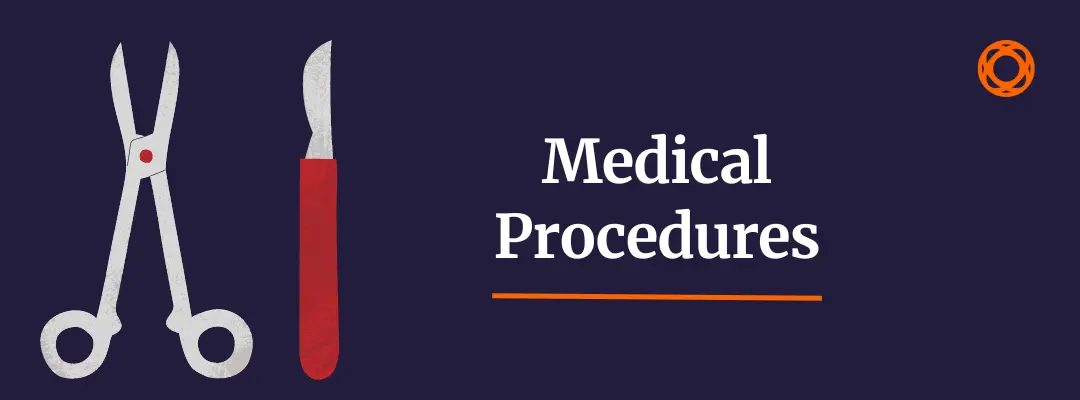
There are three suffixes to keep in mind: -scopy, -plasty and -tomy.
- -scopy means “to see”, so when you spot this suffix, you can assume it’s referring to a diagnostic procedure that uses a camera or small device to visualise something inside the body
- -plasty comes from the Greek, and it refers to surgical procedures that aim to remodel, reconstruct or even replace a body part
- -tomy means “to cut”, and again comes from the Greek
Moving on to some of the more difficult terms, there are three suffixes to consider: -stomy, -ectomy and -graphy.
- -stomy contains -tomy, so we know it means “‘to cut something” – in particular, a stoma is a surgical opening, usually a surgical aperture made on the surface of the body and leading to an internal organ
- -ectomy also contains the word –tomy, and it means to cut and remove a body part
- -graphy comes from the Greek and means “to draw”, “to picture” or “to record” – this could be for monitoring the electrical activity of the heart or even the course of blood vessels
With these in mind, let’s jump right in!
Amputation
Amputation is the surgical removal of a limb, or a part of a limb such as fingers, toes, hands or feet. It can be used to treat lack of blood flow and necrosis, serious infections or injury.
Patients need to be carefully counselled before amputation surgery, as it is a life-changing surgery. Continuing pain and phantom limb sensation may remain post-surgery.
Angiography
Angiography is a radiological diagnostic procedure used to visualise the course of blood vessels, usually an artery. As blood vessels don’t show up on radiography, a special contrast dye is injected in the vessel of interest, and a snapshot is taken.
Coronary angiography is used to visualise the coronary arteries and establish whether there’s a blockage that could result, or has resulted, in myocardial infarction.
Angioplasty
Angioplasty means “to remodel a blood vessel”. It’s a surgical procedure completed under the guidance of radiography.
During the procedure, a blocked artery (usually a coronary artery) is opened using an inflated balloon, and then kept in place with a stent, which is a rigid mesh that keeps the artery open.
Arthroscopy
Arthroscopy is a type of keyhole surgery which allows us to visualise or intervene on the internal aspects of a joint (most commonly the knees).
“Arthro” is Greek for “joint”, and we know that -scopy is the suffix used for a test with a camera. Meniscal, cruciate or other tendon repairs are performed in arthroscopy as the surgery is minimally invasive.
Biopsy
A biopsy is a surgical procedure used to remove a sample of tissue from the body (this might be from the skin, breast, liver – anywhere really!) so it can be tested by pathologists to determine whether there are cancerous changes or any other abnormalities with the organ.
Bronchoscopy
Visualising the bronchi and the major airways is hugely important in medical practice. Bronchoscopy is a -scopy procedure, so it’s performed with a flexible tube with a camera at the end.
Major airway cancers are the main diagnosis that can be confirmed with a bronchoscopy, but it can also be used to visualise obstructions and strictures of the airways.
Cauterisation
When you cauterise something, you effectively burn it. Cauterisation can be used to block a bleeding vessel (for example, inside the nose) or to remove extra tissue.
A cauteriser is used during almost all surgical procedures in order to block the bleeding after incisions are made with the scalpel.
Cholecystectomy
We know that “cholecystectomy” is a surgical procedure that removes something because it ends in -ectomy. “Chole” is the key phrase here, and it means “bile” in Greek.
During a cholecystectomy, the gallbladder is excised and removed from the abdomen. This is usually done when gallstones block the duct, or when the gallbladder is inflamed (and cannot be treated otherwise).
Colonoscopy
A colonoscopy is an endoscopic procedure used to visualise the internal aspects of the colon.
A colonoscopy is performed under sedation or anaesthesia and is a diagnostic procedure. It can provide important information on the health status of the colon, the presence of cancer or polyps, or the presence of haemorrhage sites.
Cystoscopy
A cystoscopy allows us to visualise the internal aspect of the bladder, which is what “cysto” stands for. A flexible tube with a camera at the end is inserted in the urethra until it reaches the bladder.
Visualising the lining of the bladder can rule out or diagnose cancers, bleeding sites and stones.
Dialysis
Dialysis means “to separate”, and it describes a procedure that does exactly that. Dialysis separates the blood from waste products (such as urea, creatinine and nitrogenous waste) in patients who have impaired renal function.
Dialysis and haemodialysis are sometimes used interchangeably, as haemodialysis is the primary dialysis method.
Electrocardiogram
Electrocardiography is used to record the electrical activity of the heart. This includes the:
- Discharge from the sinoatrial node (P wave)
- Depolarisation of the ventricles (QRS complex)
- Repolarisation of the ventricles (T wave)
An electrocardiogram can be interpreted to better understand the axis of the heart, and whether any pathologies are happening such as myocardial infarction or arrhythmias.
Endoscopy
Endoscopy means “to see the inside” – quite literally. An endoscopy is a diagnostic procedure where a small camera (attached to a long, flexible tube) is used to visualise the internal aspects of the body.
It can either be a gastroscopy (used to visualise the stomach) or a colonoscopy (used to visualise the intestines).
Haemodialysis
Haemodialysis is a subtype of dialysis in which blood is separated from waste products in patients who have their renal function impaired. When the kidneys go into failure, and are unable to filter out dangerous chemicals from the blood, it’s necessary to manually filter the blood to prevent serious consequences such as uraemic coma.
Haemorrhoidectomy
“Haemorrhoidectomy” is a long word, but when you break it down it’s not too difficult. A haemorrhoidectomy involves surgically removing haemorrhoids.
Haemorrhoids, also known as piles, can be thought of as varicose areas around the back passage that bleed and can be quite painful. Severe piles can be removed surgically, under general anaesthetic.
Hysterectomy
The word “hystera” means “womb” in Greek, so we can establish that this procedure is the surgical removal of the womb (uterus and cervix). Hysterectomies can be performed to radically treat cancers, fibroids or severe pelvic pain and periods.
Women should be carefully counselled before this surgery, as it is a major and life-changing procedure.
Ileostomy
Stomas can be surgically built between the outside world and the intestines. When the connection is made between the outside and the ileus, the procedure is known as an ileostomy.
When the ileum isn’t working properly, or the downstream intestine needs time to recover from another surgery, the ileus can be bypassed into a stoma.
Laminectomy
Laminectomy is a surgical procedure where you remove the lamina – the posterior part of the vertebra. With laminectomy surgery, it’s possible to relieve the pressure on the spinal cord, thereby relieving cord compression symptoms.
Compression on the spinal cord can be due to cancerous growth, herniated discs or stenosis (narrowing of the canal).
Laparoscopy
A laparoscopy is an endoscopic procedure used to visualise the internal aspects of the abdomen, and is usually paired with a surgical intervention. An example of this is the excision of the appendix, which in medical terms is known as a laparoscopic appendectomy.
The tube that contains the camera is called a laparoscope.
Liposuction
Another name for liposuction is “lipoplasty” – a surgical procedure aimed at remodelling the fat tissue. During the surgery, small areas of adipose tissue are sucked out and removed.
Liposuction is usually performed as a cosmetic plastic procedure, but it can also be used to reshape breasts following cancer surgery.
Oophorectomy
Oophorectomy is the surgical removal of the ovary, and can be performed unilaterally or bilaterally. Oophorectomy is different from hysterectomy, where only the uterus and cervix are removed.
It can be performed laparoscopically or with an open approach. Endometriosis and ovarian cancer are the two main indications for an oophorectomy, but other reasons exist.
Phlebotomy
“Phlebo” means “vein” in Greek. Phlebotomy is a procedure whereby you draw blood from a vein using a needle.
Phlebotomy is mostly used to draw blood for diagnostic purposes, but at times can also be used to remove excess blood (venesection) for certain conditions, such as haemochromatosis.
Rhinoplasty
“Rhino” is a Greek word that means “nose”. A rhinoplasty is a surgical procedure used to remodel the nose and its anatomical parts. Rhinoplasty can either be done as cosmetic surgery or corrective surgery, for example, where the nasal septum is deviated due to congenital problems or trauma.
Rhizotomy
Now, what does “rhizo” mean? Well, it means “root”. While humans don’t necessarily have roots, nerves do!
Rhizotomy is a radical surgical procedure to treat pain. In particular, the nerves responsible for enhanced or abnormal pain sensation in a specific area are cut or burnt to alleviate pain.
Thyroidectomy
A thyroidectomy is a surgical procedure “to remove” (-tomy) part or all of the thyroid gland. Thyroidectomy is used to treat conditions such as thyroid cancer, hyperthyroidism or large goitres, which can make it difficult to breathe or swallow.
Tonsillectomy
The tonsils may be surgically removed for several reasons. Tonsils are lymphoid aggregates that are found at the back of the throat, and their main purpose is immunity and infection prevention.
When tonsils aren’t working properly, they can cause recurrent infection or breathing issues if they obstruct the airway. Tonsillectomy surgery has become less and less popular recently.
Tracheostomy
During a tracheostomy, we create a small hole surgically (a stoma) in the windpipe (trachea). The reasons for a tracheostomy can be varied, but the ultimate goal is to create an alternative way of breathing if the trachea and upper respiratory tract are compromised, for example, during an anaphylactic reaction where the throat and tongue swell up.
Tympanoplasty
Tympanoplasty is cool! It’s the surgical repair and remodelling of the tympanic membrane, and it’s a perfect example of microsurgery. The procedure is performed under a microscope – as you can imagine, surgery on the tympanic membrane is quite micro in scale.
The aim of tympanoplasty is to repair perforations in the tympanic membrane that have yet to be repaired or are too big to repair themselves.
Vasectomy
A vasectomy is a procedure where the vas deferens (the tube that carries sperm from the testes to the seminal vesicles) is cut (or blocked) mechanically or with heat. Vasectomy is used as an effective form of male birth control, as sperm is not supplied when the vas deferens is interrupted.
Vasovasostomy
“Vasovasostomy” is a mouthful, but it’s not as difficult as it looks or sounds. You’ve got -stomy in there, so you know we’re creating a hole somewhere – a hole between two vases.
This surgical procedure is the reversal of a vasectomy (making a vas deferens to vas deferens connection).
Ventriculostomy
Ventriculostomy is an endoscopic procedure to create a hole between two ventricles – not the heart ventricles! That would be catastrophic…
The ventricles we refer to here, are those that are part of the aqueduct in the brain, which are responsible for producing and draining cerebrospinal fluid. A ventriculostomy is a treatment option for hydrocephalus.
Understanding medical terminology is greatly important if you want to excel in the medical field. Consistent and steady learning will bring about the best results, so dig in and commit yourself to becoming the best healthcare professional you can be!

By Diegio Balassini
Diego is a practising junior doctor, having graduated from Cambridge University, and Barts and the London School of Medicine. His undergraduate thesis focused on cancer biology and therapeutics. He is planning a career in reconstructive and plastic surgery, hoping to draw together innovations from tissue bioengineering, regenerative and stem cell research.
